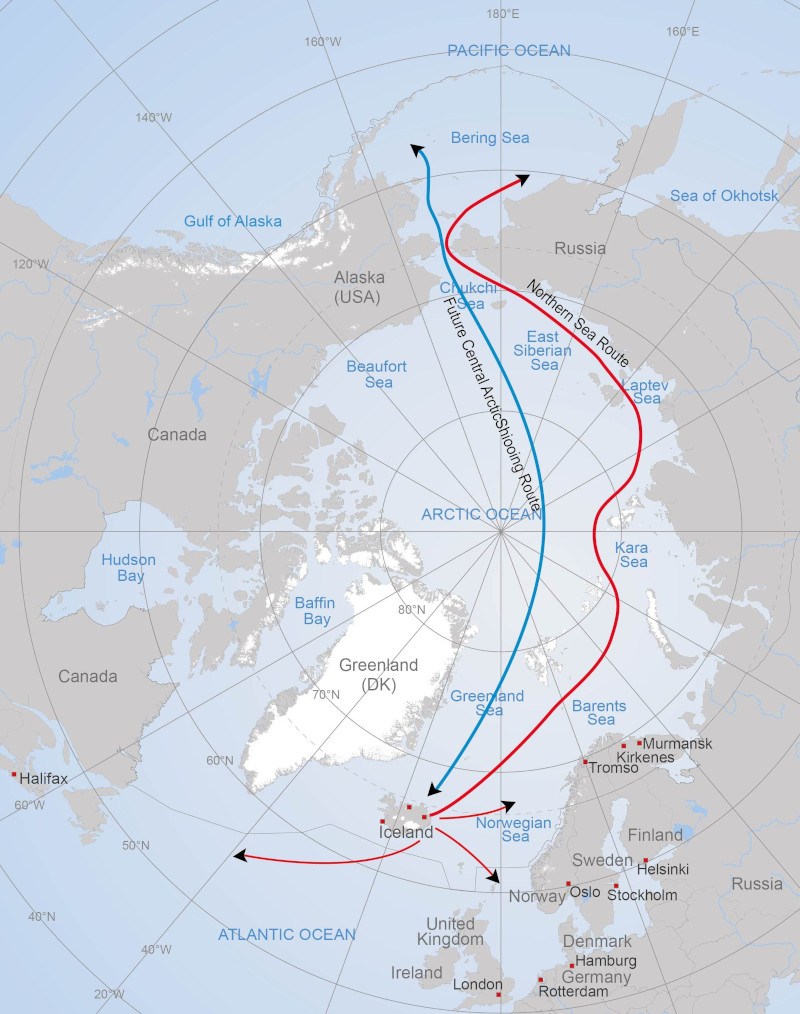The East Coast of Iceland, positioned at both the gateway to and exit from the Arctic Ocean, is gaining increasing attention from Arctic nations. Its geographic position makes it a prime candidate for trans-shipment operations in the North Atlantic, offering a strategic opportunity to shorten shipping routes for ice-class vessels.
As Arctic shipping becomes more financially viable, especially due to diminishing sea ice, vessels with ice-class certification no longer need to travel long distances, reducing operational costs and emissions.
Potential for a Major Trans-Arctic Hub
A hub port on Iceland’s East Coast could become a highly competitive option for trans-Arctic logistics. According to shipping data, this location could potentially handle over 100,000 twenty-foot equivalent units (TEUs) annually—surpassing current capacity at the Port of Reykjavik.
To meet future demands, the port infrastructure must accommodate millions of containers per year, with berths up to 400 meters long and 20 meters deep. It must also be capable of servicing ultra-large vessels up to 430 meters in length, 58 meters wide, and with a draught of 16.5 meters.
Environmental and Operational Challenges
Despite the strategic advantages, the Icelandic coastline presents several challenges. The East Coast is frequently affected by heavy fog, high swells, and severe winds reaching up to 80 meters per second. These conditions complicate port operations, especially the handling of large vessels and the use of cranes.
Harsh weather also poses difficulties for expanding infrastructure, such as constructing additional wharfs or extending hub facilities in the future.
Infrastructure and Supporting Resources
Iceland’s competitive advantages lie in its abundant and inexpensive renewable electricity and water resources—both essential for continuous trans-shipment operations. The proximity of nearby airports with frequent international flights enhances connectivity between marine and air transport.
Moreover, low-cost repair and maintenance services, along with access to oil storage for fleet needs, strengthen the case for developing a large-scale hub on the East Coast.
Investment Considerations and International Cooperation
While the estimated cost of the project—approximately €900 million—is substantial, it raises important questions about Iceland’s financial capacity to lead such a development. Nonetheless, international collaboration between Arctic governments and private investors could accelerate progress and distribute the financial burden.
Notably, countries like Russia and other major exporting nations have shown interest in supporting such an initiative, indicating a broader geopolitical and economic relevance beyond Iceland alone.
Sources: Dreki Area, North Meets North: Navigation and the Future of the Arctic, Northern Sea Route ProjectMap: Arctic Portal (to view more maps please visit our Map Gallery)









